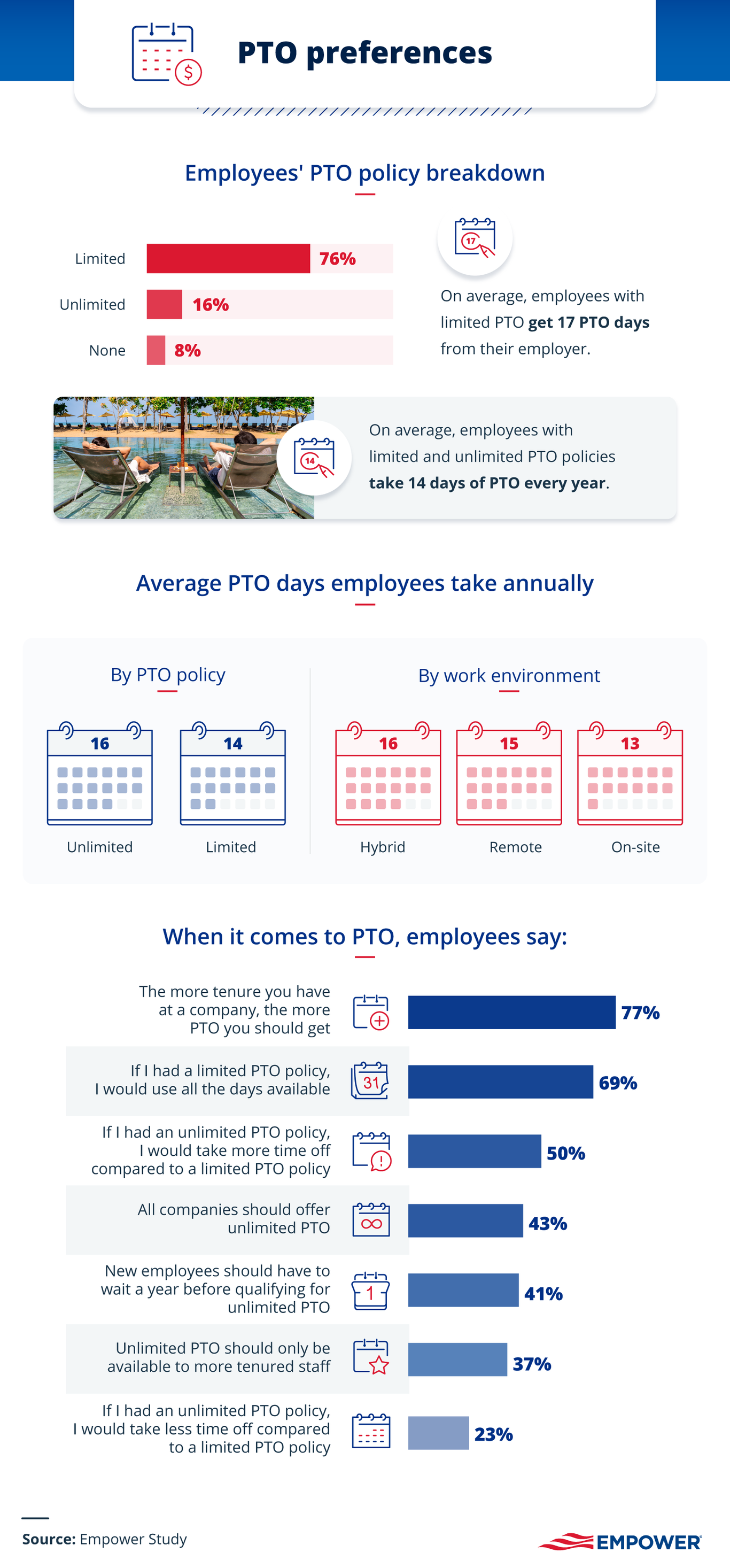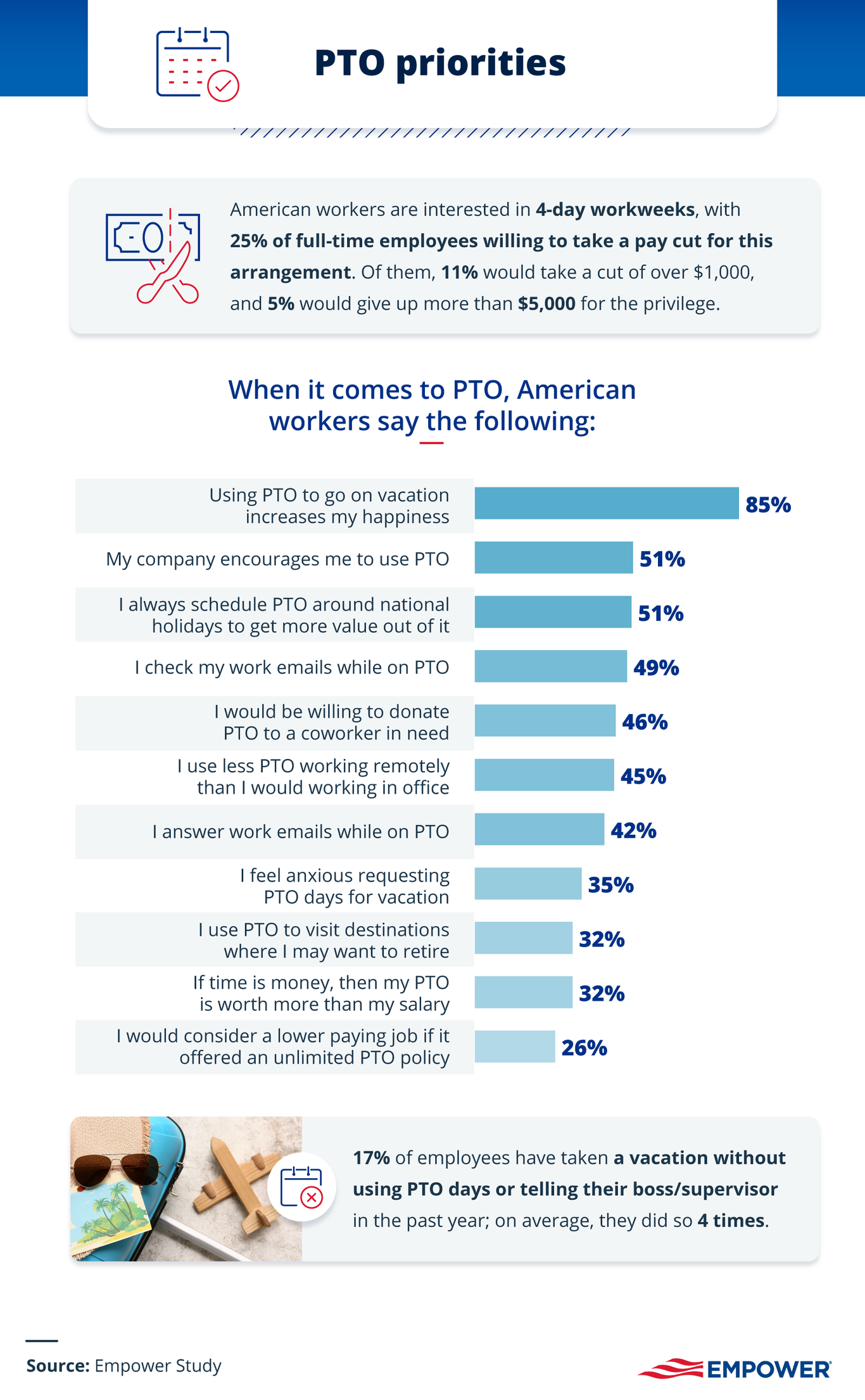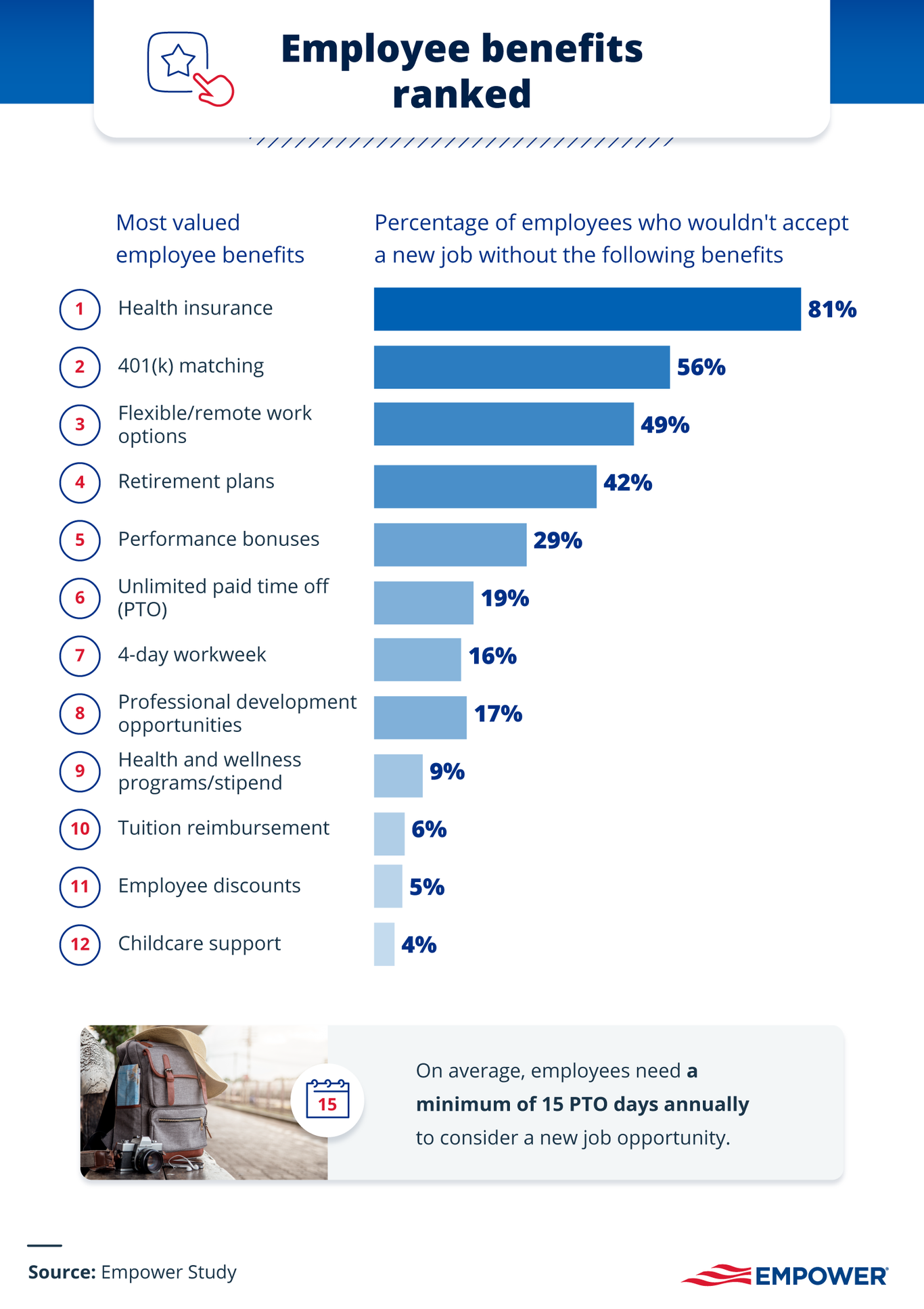Pursuit of PTO: Half of Americans feel tied to their emails on vacation

Key takeaways
- 49% of people admit to checking their email while on PTO, and 35% say they get anxious when requesting PTO days for vacation.
- 26% of workers would consider a lower-paying job if it offered unlimited PTO, while nearly 1 in 5 wouldn't accept a new job without it (19%).
- On average, employees need at least 15 PTO days annually to consider a new job opportunity.
- 85% of employees say using PTO to travel boosts their happiness.
- About a third (32%) use their PTO to visit destinations where they may want to retire.
Unlimited PTO tops the "workplace wishlist" for many employees, with 1 in 5 Americans saying they'd decline a new job if it didn't offer the benefit, according to new Empower research. More than 2 in 5 say all companies should offer unlimited PTO (43%), but despite the popularity, there's not much difference in the amount of time taken off per year, on average: 16 days for those with unlimited and 14 days for those with a limited policy. A two-day difference is small, especially when half (50%) say they'd take off more time if they had an unlimited policy, while nearly 1 in 4 say they'd take less time off (23%).
Over 4 in 5 workers (85%) say using their PTO to go on vacation increases their happiness, but 35% feel anxious requesting the time off. Nearly half of full-time employees (49%) check their work emails while on PTO, and 42% answer them. In the past year, close to 1 in 5 say they've taken a vacation without using PTO days or telling their supervisor; on average, they admit to doing so four times.
PTO perks & policies
When it comes to PTO, some employees believe it's tied to time on the job: 77% say the more tenure a person has at a company, the more PTO they should get, and 37% believe unlimited PTO should only be available to more tenured staff. Over 4 in 10 say new employees should have to wait a year before qualifying for unlimited PTO.
Gen Zers are more likely to support unlimited PTO policies, with 51% believing that all companies should offer it, compared to 32% of Baby Boomers.
PTO strategies and the 4-day workweek
Half of people (51%) strategically schedule their PTO days around national holidays to make the most of their PTO usage. About a third (32%) use their PTO to visit destinations where they may want to retire.
Four-day workweeks are also an attractive benefit, with 16% of employees saying they wouldn't accept a new job without this perk. One in 4 full-time employees are willing to take a pay cut for this arrangement. Of them, 11% say they'd take a cut of over $1,000, and 5% say they'd give up more than $5,000 for the privilege. Gen Zers show the most interest in taking a pay cut for this benefit (31%), and Millennials are most likely to consider taking a cut of over $5,000 (6%) to enjoy a four-day workweek.
Most desired employee benefits
More than a quarter (26%) would consider a lower-paying job if it offered unlimited PTO, while nearly 1 in 5 wouldn't accept a new job without it (19%). On average, employees need at least 15 PTO days annually to consider taking a new job.
Methodology
Empower surveyed 1,028 full-time employees on July 24, 2024.
About Empower
Empower, a leader in financial planning, investing, and advice, is dedicated to creating financial freedom through people and technology.
Connect with us on Empower.com and subscribe to The Currency™ for the latest money news and views shaping how we live, work, and play.
Fair use statement
These insights are available for noncommercial sharing with a citation link.
Get financially happy
Put your money to work for life and play
RO3817048-0924
The content contained in this blog post is intended for general informational purposes only and is not meant to constitute legal, tax, accounting or investment advice. You should consult a qualified legal or tax professional regarding your specific situation. No part of this blog, nor the links contained therein is a solicitation or offer to sell securities. Compensation for freelance contributions not to exceed $1,250. Third-party data is obtained from sources believed to be reliable; however, Empower cannot guarantee the accuracy, timeliness, completeness or fitness of this data for any particular purpose. Third-party links are provided solely as a convenience and do not imply an affiliation, endorsement or approval by Empower of the contents on such third-party websites. This article is based on current events, research, and developments at the time of publication, which may change over time.
Certain sections of this blog may contain forward-looking statements that are based on our reasonable expectations, estimates, projections and assumptions. Past performance is not a guarantee of future return, nor is it indicative of future performance. Investing involves risk. The value of your investment will fluctuate and you may lose money.
Certified Financial Planner Board of Standards Inc. (CFP Board) owns the certification marks CFP®, CERTIFIED FINANCIAL PLANNER™, CFP® (with plaque design), and CFP® (with flame design) in the U.S., which it authorizes use of by individuals who successfully complete CFP Board's initial and ongoing certification requirements.








